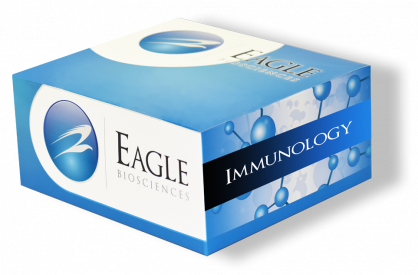Anti-IA2 ELISA Assay Kit
Anti-IA2 ELISA Assay Kit Developed and Manufactured by Medipan for research use only
Size: 12 x 8 wells
Sensitivity: 1.0 IU/mL
Incubation Time: 2 hours 40 minutes
Sample Type: Serum
Sample Size: 50 µL
Alternative Names: Protein Tyrosine Phosphatase
Controls Included
Assay Background
Diabetes mellitus type 1 is a chronic autoimmune disease in which the insulin-producing beta cells of the islets of Langerhans in the pancreas are destroyed. The consequence of this destruction is a reduced insulin production, which results in high blood sugar levels as diabetes mellitus. Genetic predispositions and viral infections are considered risk factors, but the exact causes have not yet been fully clarified.
The destruction of the insulin-producing beta cells of the pancreas is based on the presence of islet cell antibodies (ICA), which are directed against different antigens of the pancreatic islet cells, such as glutamic acid decarboxylase (GAD65), tyrosine phosphatase (insulinoma-associated antigen 2, IA2), the zinc transporter 8 (ZnT8) and against insulin. Islet cell antibodies (ICA) can be detected in 70 – 80 % of patients with diabetes mellitus. The different antibodies usually appear months to years before the occurrence of elevated blood sugar levels and are therefore also considered important prognostic markers to identify patients with an increased risk of developing diabetes mellitus type 1. The combined detection of antibodies against GAD65, IA2, ZnT8 and insulin is considered an important method for diagnosing diabetes mellitus type 1 at the onset of the disease.
Protein tyrosine phosphatase (insulinoma-associated antigen 2, IA2) is localized in the granules of pancreatic beta cells. Antibodies against IA2 can be detected in the majority of patients with diabetes mellitus type 1 and in a large number of individuals in the prediabetic phase. The appearance of antibodies against the protein tyrosine phosphatase IA2 is correlated with rapid progression of diabetes mellitus type 1.
Assay Principle
The ELISA (Enzyme Linked Immunosorbent Assay) is an immunoassay for the determination of specific antibodies. The strips of the microtiter plate are coated with test-specific antigens. If antibodies are present in the patient’s sample, they bind to the antigens. A second biotinylated antigen binds the immobilized fixed antibody. The assay utilizes the ability of antibodies to act bivalently with immobilized and soluble antigens. Streptavidin conjugated with the enzyme peroxidase detects the generated immune complex. A colorless substrate is converted into the colored product by the peroxidase. The signal intensity of the reaction product is proportional to the antibody activity in the sample. After stopping the signal intensity of the reaction product is measured photometrically.
Related Products
Anti-dsDNA ELISA Assay Kit
Anti-CCP ELISA Assay Kit
Anti-GAD ELISA Assay Kit


